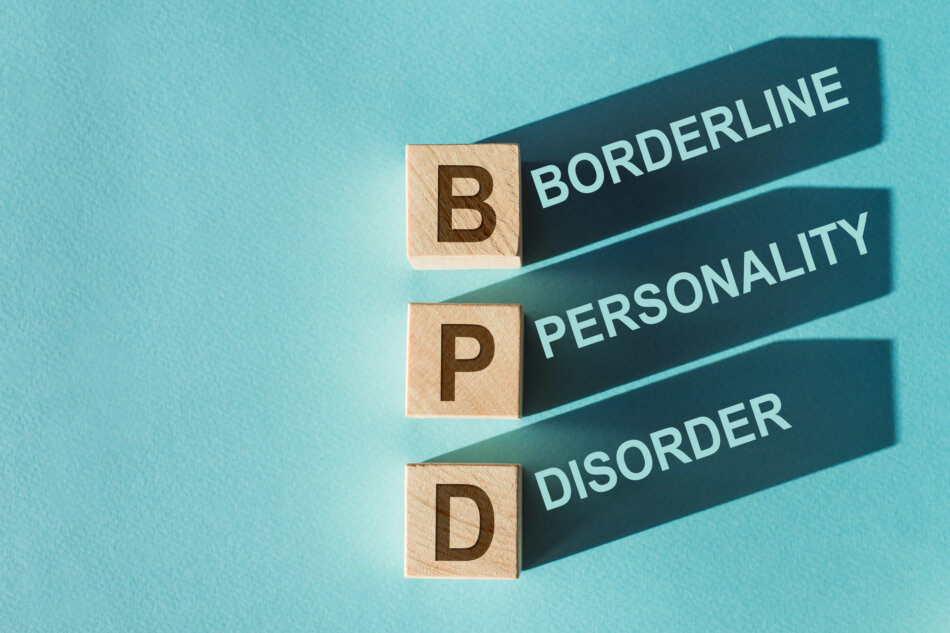You deserve accessible, flexible care that fits your life, whether you’re managing persistent worry, overwhelming sadness, or mood swings. Outpatient treatment for depression and anxiety offers evidence-based therapies, medication management, and holistic support—all without interrupting your daily routine. Many programs accept insurance, ensuring you can focus on healing rather than finances. In this guide you’ll learn how outpatient care works, what to expect, and how to find a program that aligns with your needs and coverage.
Understand outpatient treatment
Outpatient care allows you to receive professional mental health services while living at home, working, or attending school. It’s an ideal option if your symptoms are stable enough to manage outside a residential setting but you still require regular therapy, medication oversight, or group support.
What outpatient care involves
- Scheduled therapy sessions with a licensed clinician
- Psychiatric evaluations and medication adjustments
- Group workshops on coping skills, stress management, or relapse prevention
- Coordination with your primary care provider or specialists
- Occasional check-ins for symptom monitoring and progress reviews
Who benefits from outpatient programs
Outpatient treatment for depression and anxiety is suitable if:
- You experience moderate symptoms that do not require 24-hour supervision
- You have a stable home environment and supportive relationships
- You can commit to regular appointments and homework assignments
- You want to maintain work, school, or family responsibilities
- You seek long-term recovery with individualized plans
Recognize common symptoms
Identifying your symptoms is the first step toward tailored treatment programs. Many adults face overlapping signs of depression and anxiety, making a comprehensive approach essential.
Signs of depression
- Persistent sadness, emptiness, or hopelessness
- Loss of interest in activities you once enjoyed
- Changes in appetite or weight, sleep disturbances
- Difficulty concentrating, feeling worthless or guilty
- Thoughts of death or suicide
If you’re unsure whether your mood warrants professional help, a free depression screening under the Affordable Care Act can provide initial insights (WebMD).
Signs of anxiety
- Excessive worry or fear about everyday situations
- Restlessness, irritability, or muscle tension
- Racing thoughts or difficulty controlling worry
- Sleep disturbances or fatigue
- Panic attacks featuring rapid heartbeat and shortness of breath
For specialized support, consider anxiety treatment for adults or explore an anxiety recovery and coping skills program.
Explore underlying causes
Understanding what drives your symptoms helps create an individualized plan. Depression and anxiety often stem from a combination of factors rather than a single source.
Biological factors
- Genetics: a family history of mood disorders increases risk
- Brain chemistry: imbalances in neurotransmitters like serotonin or GABA
- Hormonal shifts: thyroid issues, menopause, or postpartum changes
Environmental triggers
- Chronic stress at work or in relationships
- Traumatic events or unresolved grief
- Financial pressures or unstable living conditions
Psychological contributors
- Maladaptive thought patterns or negative self-talk
- Co-occurring conditions such as substance use disorders
- Personality traits like perfectionism or excessive self-criticism
Exploring these root causes with a clinician lays the foundation for lasting recovery.
Review evidence-based care
Clinical research supports several core therapies and interventions as the backbone of effective outpatient treatment for mood and stress disorders.
Cognitive behavioral therapy
CBT helps you identify and challenge negative thought patterns that fuel depression or anxiety. Through structured exercises, you learn healthier responses to triggers, reducing relapse risk.
Benefits of CBT:
- Encourages self-reflection and insight
- Teaches practical coping strategies
- Demonstrates lasting symptom reduction
Many programs integrate CBT into individual or group sessions; to find one near you, see evidence-based therapy for mood and stress disorders.
Dialectical behavior therapy
Originally developed for borderline personality disorder, DBT teaches mindfulness, emotion regulation, distress tolerance, and interpersonal effectiveness. It’s increasingly used for treatment-resistant depression and anxiety.
Key DBT skills:
- Mindful awareness of thoughts and emotions
- Techniques for tolerating distress without impulsive reactions
- Strategies for building and maintaining healthy relationships
Medication management
Psychiatrists or primary care providers can prescribe antidepressants, anti-anxiety medications, or mood stabilizers. Common options include:
- SSRIs (selective serotonin reuptake inhibitors)
- SNRIs (serotonin-norepinephrine reuptake inhibitors)
- Benzodiazepines for short-term anxiety relief
- Atypical antipsychotics or mood stabilizers for complex cases
Regular follow-ups ensure dosages are optimized and side effects minimized.
Trauma-informed therapy
If past trauma contributes to your symptoms, trauma-focused approaches such as EMDR (eye movement desensitization and reprocessing) or somatic experiencing can be integrated into outpatient care to promote safety and healing.
Consider holistic practices
In addition to clinical therapies, holistic interventions support overall wellness and resilience.
Exercise and physical wellness
Regular physical activity boosts endorphins, reduces stress hormones, and improves sleep. Aim for:
- 30 minutes of moderate exercise most days
- Strength training twice weekly
- Activities you enjoy, from walking to yoga
Mindfulness and meditation
Mindfulness practices cultivate awareness of the present moment, helping you manage racing thoughts and reduce reactivity.
Techniques include:
- Guided imagery or body scans
- Breath-focused meditation
- Apps like Headspace or Calm for daily practice
Nutrition and sleep
A balanced diet and consistent sleep routine are vital:
- Eat whole grains, lean proteins, fruits, and vegetables
- Limit caffeine, alcohol, and processed sugars
- Aim for 7 to 9 hours of sleep per night
- Establish a wind-down ritual to signal your body it’s time to rest
Navigate insurance coverage
Understanding how mental health benefits work can relieve financial stress and help you access the care you need.
Essential mental health benefits
Under the Affordable Care Act, mental health services—including outpatient treatment for depression and anxiety—are classified as essential health benefits (HealthCare.gov). This means most private plans and Marketplace policies must cover:
- Outpatient therapy and counseling
- Psychiatric evaluation and medication management
- Partial hospitalization and intensive outpatient programs
- Free preventive screenings for depression
Parity protections
Federal parity laws require that mental health coverage be equal to or better than coverage for medical services. Insurers cannot impose higher copays, stricter limits, or lower reimbursement rates for mental health care compared to physical health care.
Coverage comparison table
| Insurance provider | Coverage highlights | Special programs |
|---|---|---|
| Kaiser Permanente ([Forbes Advisor]) | Covers depression, anxiety, bipolar disorder, substance use disorders; online therapy appointments, assessments, mental health coach | Integrated digital resources |
| Blue Cross Blue Shield ([Forbes Advisor]) | Covers anxiety, depression, eating disorders, substance abuse; “Learn to Live” offers free support for depression, insomnia, social anxiety, substance use | Available in select states |
| UnitedHealthcare ([Forbes Advisor]) | Covers in-person, phone, and video therapy; emotional support via Talkspace; treatment for anxiety, depression, bipolar, PTSD | Teletherapy options |
Review your plan documents or contact your HR department to confirm specific benefits and provider networks.
Find insurance-accepted programs
Once you know your coverage, you can narrow down programs that fit your needs and budget.
In-network versus out-of-network
- In-network providers have negotiated rates with your insurer, lowering your out-of-pocket costs.
- Out-of-network providers may offer greater flexibility but can come with higher copays or coinsurance.
Sliding-fee scale options
Many community mental health centers, federally qualified health centers, and nonprofit programs use a sliding-fee scale based on your income (SAMHSA). Ask about:
- Income-based fees for therapy sessions
- Reduced rates for group workshops
- Payment plans to spread costs over time
Low-cost and free services
If you lack insurance or face high deductibles, consider:
- College or university clinics offering therapy by supervised graduate students (ADAA)
- Federally funded community centers with pay-what-you-can models
- Support groups and peer-led programs at minimal or no cost
Choose your treatment plan
Your recovery journey is unique. Tailored treatment programs that respect your goals, schedule, and preferences will set you up for success.
Personalizing your goals
Work with your clinician to define:
- Short-term goals (for example, reducing panic attacks or improving sleep)
- Medium-term goals (building coping skills, returning to work or school)
- Long-term goals (maintaining wellness, preventing relapse)
Questions to ask providers
- What therapies or modalities do you specialize in?
- How often will we meet, and what is expected between sessions?
- How do you coordinate with my primary care provider or psychiatrist?
- Can you assist with insurance authorizations and billing?
Setting realistic milestones
Break larger goals into manageable steps, celebrate progress, and adjust your plan as needed. A supportive environment and regular check-ins foster accountability and growth.
Maintain long-term progress
Healing is an ongoing process. Outpatient care equips you with tools and support networks to sustain your gains.
Ongoing support strategies
- Continue booster sessions or drop-in groups after initial treatment
- Use apps or journals to track mood, sleep, and medication adherence
- Schedule periodic check-ins with your therapist or psychiatrist
Relapse prevention techniques
- Identify early warning signs of relapse, such as increased isolation or disrupted sleep
- Develop coping plans that include contacts for crisis lines, friends, or providers
- Practice stress-reduction routines regularly
Building a support network
- Lean on friends, family, and peer groups who understand your journey
- Attend community workshops or online forums for renewed motivation
- Share your progress and setbacks to reinforce connection and accountability
Take the next steps
You don’t have to face depression or anxiety alone. With outpatient treatment, you can access comprehensive care, evidence-based therapies, and holistic supports—all aligned with your insurance benefits. To explore programs in your area, review our mental health treatment that accepts insurance page, talk with your primary care provider, or contact your insurer for an updated directory of in-network specialists. Empower your recovery journey today—lasting wellness is within reach.










